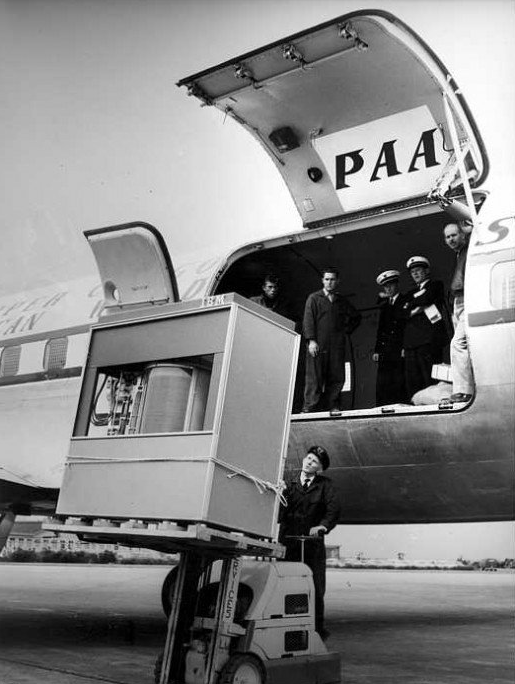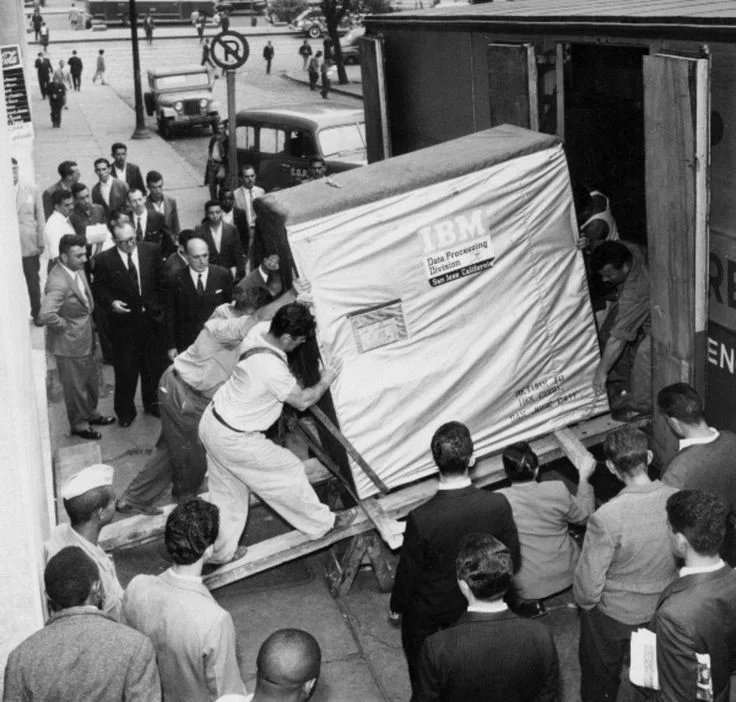In the whirlwind of modern tech, it’s refreshing to take a step back and appreciate the giants of the past. A recent throwback shared showcases an IBM hard drive being loaded onto an airplane in 1956, serving as a poignant reminder of our digital roots.
Cast your mind back to ’56 when this hard drive was the talk of the town. Weighing in at over 2,000 pounds and boasting a mere 5 mega-bytes of storage, it was a marvel of its time. To put things in perspective, that’s about the size of a small truck today!
Enter IBM’s 305 RAMAC, a groundbreaking creation unveiled in September ’56. It marked the debut of the first-ever computer with a hard disk drive (HDD). Imagine a machine that could barely fit in a room, yet held the potential to revolutionize data storage. It’s the stuff of tech legends!
Operating the 305 RAMAC was no small investment, costing companies a hefty $35,000 annually. And what did they get for it? A paltry 5 MB of storage – a far cry from the terabytes we take for granted today. It’s a stark reminder of the cost of innovation.

Fast forward to the present day, where a tiny micro SD card can hold millions of times more data than its ’56 counterpart. And don’t even get us started on modern hard drives – they’re like storage juggernauts compared to the humble beginnings of the IBM hard drive.
Robert Mann suggests that the drive in the picture is an IBM 350, which was announced in 1956 and, per Wikipedia, actually only had 3.75 megabytes of storage. Also per Wikipedia, the 350 was available for rent…for $3,200 per month. Here’s how it worked:
Its design was motivated by the need for real time accounting in business. The 350 stored 5 million 6 characters (3.75 megabytes).[7] It had fifty 24-inch (610 mm) diameter disks with 100 recording surfaces. Each surface had 100 tracks. The disks spun at 1200 RPM. Data transfer rate was 8,800 characters per second. An access mechanism moved a pair of heads up and down to select a disk pair (one down surface and one up surface) and in and out to select a recording track of a surface pair. (source businessinsider)
As we marvel at the strides we’ve made in technology, it’s crucial to acknowledge the pioneers who paved the way. The 1956 IBM hard drive may seem antiquated now, but it laid the foundation for the digital landscape we inhabit today.
So, the next time you’re scrolling through files on your smartphone or backing up data on your external drive, spare a thought for the trailblazers who kick-started our digital revolution. After all, they set the stage for the gadgets and gizmos that enrich our lives today.









